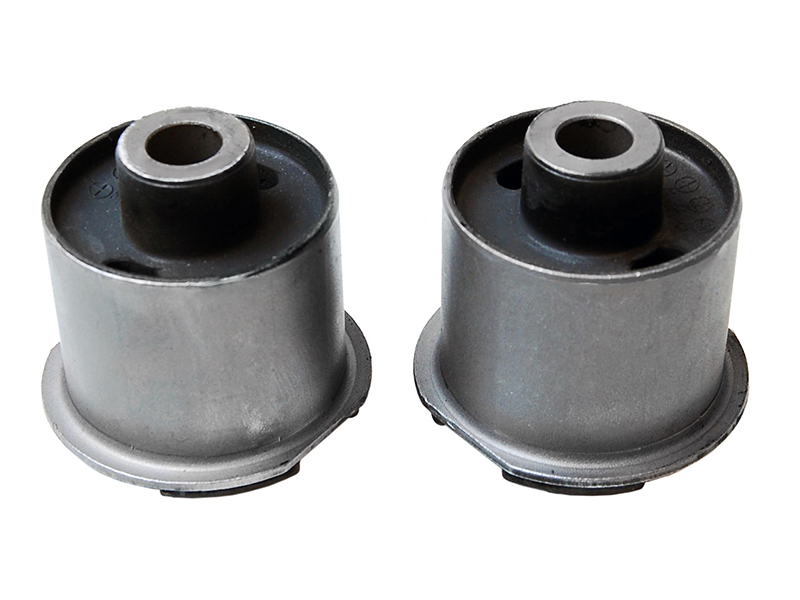Bushings are generally made from rubber or a polymer such as polyurethane. They are used to cushion driveline, suspension and steering components to facilitate chassis pivot points and reduce transmitting road noise, shock and vibration to the passenger cabin. They also hold chassis and suspension components in their correct place to promote vehicle tracking and original handling characteristics.
To ensure optimal life and performance, bushings should be designed and made to withstand ambient conditions so they minimize noise and vibration while retaining factory vehicle handling characteristics.
TYPICAL TELL-TALE SIGNS OF WORN BUSHINGS
• Rattling when driving on gravel roads
• Clunking or knocking when making sharp turns or hitting the brakes
• The vehicle trembles along the front portion
BUSHING TYPES
Control Arm – These help maintain the control arm’s lateral and vertical position relative to the chassis. They usually consist of an inner and outer metal sleeve with a rubber or polyurethane bushing in between. Control arm bushings are important for driving comfort and handling.
Stabilizer/Sway Bar – These cushion the movement between the stabilizer bar and vehicle roll while cornering. These bushings wear out over time and can cause steering and handling issues.
Rack and Pinion – These are used to cushion the chassis from the rack and pinion steering unit, to insulate road noise from the cabin.
Axle – These are used in both the front and rear of some suspension systems and allow the axle to pivot without binding. These bushings also wear out over time and require replacing.
Bushings normally wear out between 90,000 and 100,000 miles. They may wear out faster when subjected to impacts and shock loads, such as driving over large potholes or if the vehicle is involved in an accident.
Regardless of the bushing type, all bushings will eventually need replacing at least once in a vehicle’s lifetime as the cushioning material ages, starts to rip and then cracks.

